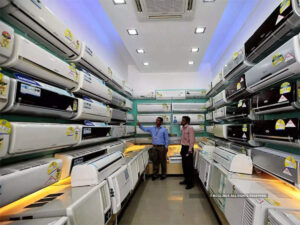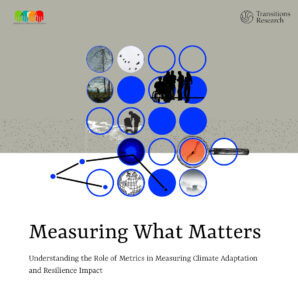As India urbanises rapidly, the built environment faces a dual challenge of reducing carbon emissions while ensuring resilience to climate extremes, particularly rising temperatures. Vernacular construction materials and techniques, while deeply rooted in local contexts, often struggle to meet modern urban demands. Meanwhile, conventional technologies promise efficiency but may carry high embodied carbon costs. Striking the right balance between vernacular materials and innovation is critical for transitioning India’s construction sector towards a sustainable and equitable low-carbon future.
Mid-sized cities will play an important part in India’s urban expansion, with building stock in these geographies set to grow 60% by 2050. Without effective intervention, they risk locking in high-carbon infrastructure and worsening climate risks. Balancing affordability, accessibility, and sustainability is key to mainstreaming low-carbon materials in the buildings sector.India’s Long-Term Low-Carbon Development Strategy emphasizes urban adaptation and efficiency in energy and materials, tackling both operational and embodied carbon for lasting sustainability.
Understanding Embodied and Operational Carbon emissions in Buildings
Operational emissions refer to greenhouse gas (GHG) emissions generated from energy consumption during a building’s use phase, such as heating, cooling, and lighting. Embodied emissions, on the other hand, stem from the production, transportation, and disposal of building materials, which can account for up to 50% of a structure’s total emissions over its lifecycle. Life Cycle Analysis (LCA) provides a holistic framework to assess these emissions, ensuring that decarbonisation efforts encompass all stages of a building’s existence.
While India’s energy transition focuses largely on operational emissions such as increasing the share of renewable energy for electricity generation, embodied carbon remains an under-addressed challenge. Cement and steel, which are the backbone of modern construction, are carbon-intensive materials. For instance, cement production alone accounts for nearly 8% of global CO2 emissions. Moreover, buildings constructed with conventional materials often require more energy for cooling and maintenance over time, driving up long-term energy costs for occupants. The question, then, is how we can shift towards materials that are locally available, less carbon-intensive, and adapted to India’s diverse climatic zones.
Locally Sourced Materials: Leveraging Indigenous Knowledge
Traditional construction methods across India have long leveraged locally available materials that offer both environmental and functional advantages. Compressed Stabilized Earth Blocks (CSEB), commonly used in Karnataka and Tamil Nadu, utilize local soil, minimizing dependence on energy-intensive fired bricks while maintaining structural integrity. Similarly, lime plaster and mortar, found in Rajasthan’s heritage buildings, not only provide natural insulation but also absorb CO2 during curing, making them a sustainable alternative to conventional cement. In the Northeast and Kerala, bamboo and timber have been integral to construction, offering a fast-growing, high-strength substitute for steel while supporting local economies. Furthermore, rammed earth and cob techniques, prevalent in Ladakh and Gujarat, create high thermal mass structures that naturally regulate indoor temperatures, reducing reliance on mechanical heating and cooling. By integrating these time-tested materials with modern engineering research and advancements, along with supportive business models, India can build climate-resilient and low-carbon urban landscapes.
Emerging Low-Carbon Technologies
While locally sourced materials offer sustainability advantages, modern innovations can further reduce the construction sector’s carbon footprint. GGBS (Ground Granulated Blast Furnace Slag) and fly ash-based concrete utilize industrial by-products to replace a significant portion of cement, lowering embodied carbon without compromising strength. Similarly, carbon-negative bricks, developed by Indian startups, repurpose industrial waste and agricultural residues, simultaneously reducing emissions and landfill waste. Another promising material is hempcrete, a lightweight, insulating composite made from hemp fibres and lime that actively sequesters carbon over time. Another innovative solution is cross-laminated timber (CLT), which presents a renewable, high-strength alternative to steel structures, though its adoption in India remains limited.
Scaling up these innovations alongside vernacular materials can significantly advance India’s low-carbon construction transition. These materials, however, require policy push, industry adoption, and updated building codes for wider application.
Can India’s green building movement go beyond private ratings and focus on embodied carbon standards?
Challenges to Low-Carbon Construction
The widespread adoption of low-carbon materials in India faces several barriers, starting with the lack of embodied carbon standards. While operational energy efficiency is addressed through codes like the ECBC, there is limited regulation or guidance around emissions from building materials and construction processes. India currently lacks embodied carbon standards, a national database for low-carbon materials, and fiscal incentives that directly promote their adoption, making it difficult to evaluate, compare, or encourage better alternatives.
Conventional materials like cement and steel dominate due to strong supply chains, making alternatives harder to access,especially in mid- sized cities where affordability is a priority. High upfront costs, limited availability, and low awareness among builders and contractors slow down integration. Domestic enforcement of sustainability standards remains weak, even as Indian manufacturers comply with stricter green labels for exports. Without clear policies, demand generation, and supply chain investment, progress toward low-carbon construction will remain marginal.
Green building experts can help bridge this gap. Using life cycle analysis, they assess the environmental impact of materials across a building’s lifespan, guiding climate-conscious choices. Their role, alongside architects and contractors, is vital to mainstreaming low-carbon construction, especially in mid-sized cities where scalable, climate-smart growth is still possible.
Mid-sized Cities as Catalysts for Low-Carbon Building Adoption
Mid- sized cities hold strong potential for advancing sustainable construction, unburdened by the space constraints and density pressures of larger metros. Some builders are already experimenting with alternatives like ACC blocks, signaling an openness to low-carbon materials. With more available land, these cities can easily adopt climate-responsive, well-ventilated designs that reduce dependence on energy-intensive cooling. Their ongoing urban growth and close-knit communities also make them ideal for piloting behavioral shifts toward low-carbon living.
Building professionals—architects, contractors, and green building experts—can drive this transition by raising awareness through workshops, demonstration projects, and accessible knowledge platforms. Analysing the life cycle emission of a building at the planning stage and introducing and enforcing Energy Conservation Building Codes (ECBC) can further guide the construction of thermally comfortable, efficient spaces. These cities also offer an opportunity to revive vernacular architecture and promote locally sourced, climate-appropriate materials. Coupled with green certifications, financial incentives, and visible long-term savings, mid- sized cities can become living labs for culturally grounded, climate-resilient building models that lead India’s net-zero transformation.
Conclusion
India’s transition to a low-carbon built environment must uncover and address the often-overlooked climate impact of building materials and construction practices. The integration of traditional construction knowledge, emerging low-carbon technologies, and life cycle-based planning can redefine how we build the balancing modern aspirations with environmental responsibility. mid- sized cities, with their growth potential and cultural depth, are uniquely positioned to lead this shift. With the right mix of policy support, professional expertise, and community participation, they can become the frontlines of India’s sustainable urban future.




